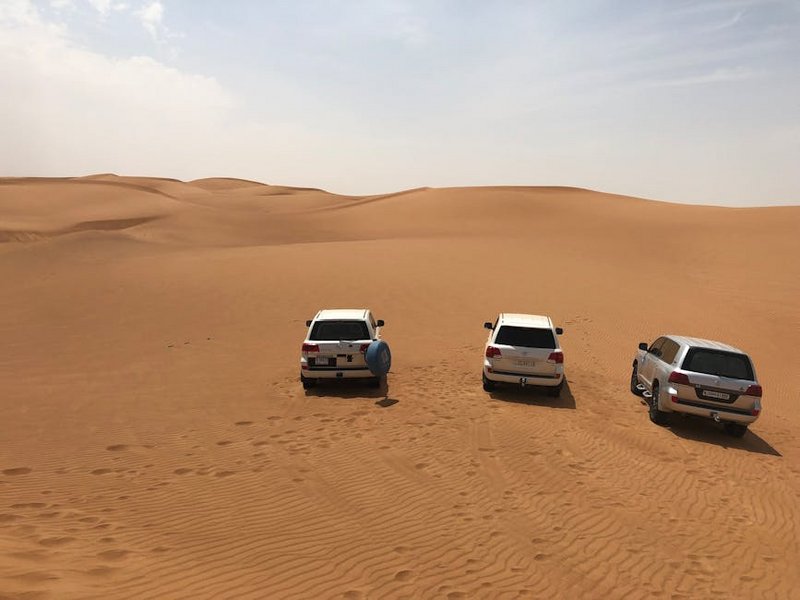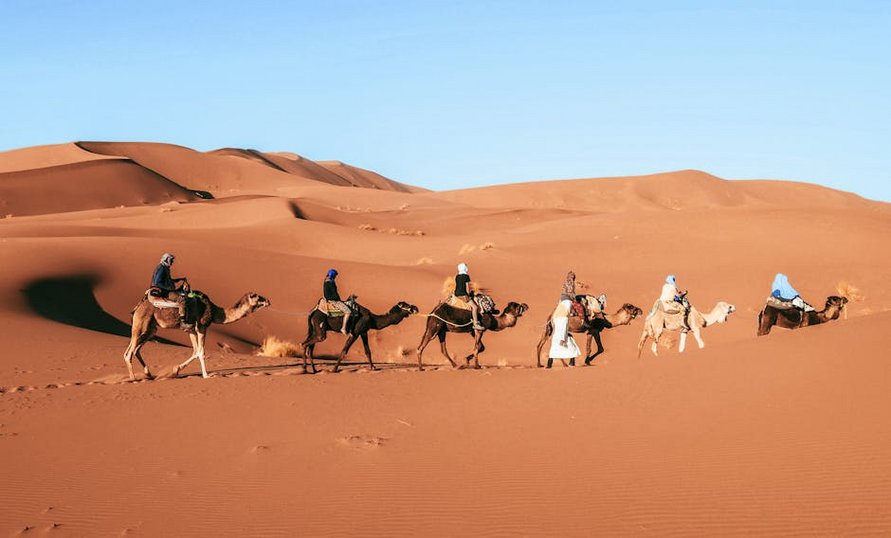United Arab Emirates Liwa Desert Dunes: A Majestic Desert Escape
The United Arab Emirates Liwa Desert Dunes form the world’s largest continuous sand desert, offering travelers an authentic Arabian adventure just a few hours from Abu Dhabi. These massive dunes reach heights over 300 feet in the Rub’ al Khali region, creating dramatic landscapes perfect for photography and exploration. This guide covers everything from dune bashing adventures to traditional Bedouin cultural experiences.
Essential Liwa Desert Information
The Liwa Oasis sits at the northern edge of the Empty Quarter, spanning the Abu Dhabi emirate with some of the planet’s most impressive sand formations. This region features towering dunes that shift constantly with desert winds, creating ever-changing landscapes. Local communities maintain traditional date farming practices amid the arid environment.
Summer temperatures frequently exceed 115°F (46°C) while winter brings pleasant 75°F (24°C) days perfect for exploration. The desert ecosystem supports limited but resilient wildlife including Arabian oryx and desert foxes. Visitors should respect this fragile environment during their adventures.
What You Need to Know Before Visiting
Prepare for extreme desert conditions with these essential tips.
- Book desert tours through licensed operators like Arabian Adventures for safety and quality experiences.
- Carry multiple water bottles since dehydration occurs quickly in 5% humidity conditions.
- Download offline maps because mobile service disappears beyond the Liwa Oasis settlements.
- Budget travelers spend $50-100 daily using shared tours, camping, and supermarket meals while focusing on free dune exploration.
- Mid-range visitors allocate $150-250 daily for private tours, 3-star hotels, and restaurant dining with some luxury experiences included.
- Luxury experiences cost $300-500 daily featuring premium desert resorts, private guides, and exclusive activities like falconry displays.
- Abu Dhabi Department of Culture and Tourism
- Lonely Planet UAE Travel Guide
Geographical and Historical Context
The Rub’ al Khali covers 250,000 square miles across four nations with Liwa representing its most accessible portion. This Empty Quarter contains some of Earth’s tallest dunes, with Moreeb Hill reaching 980 feet high. Bedouin tribes have inhabited these lands for centuries, developing survival techniques now shared through cultural tours.
Modern infrastructure includes the Liwa International Festival grounds hosting annual events. The region’s history appears in local museums detailing pearl diving and trading routes. These elements combine ancient traditions with contemporary Arabian hospitality.
Climate and Environmental Considerations
Desert conditions demand careful planning and appropriate gear for comfort.
Winter months from November through March provide ideal 70-85°F (21-29°C) temperatures for outdoor activities. Summer heat from June to August makes daytime exploration challenging without air-conditioned vehicles. Sandstorms occasionally reduce visibility between May and July.

Alt: “liwa-desert-massive-sand-dunes-sunset-golden-light”
Planning Your United Arab Emirates Liwa Desert Dunes Trip
Organizing your desert adventure requires considering seasonal weather patterns and activity preferences. The United Arab Emirates Liwa Desert Dunes experience peak visitation between December and February when temperatures remain comfortable for outdoor excursions. Budget approximately $100-300 daily depending on accommodation style and tour inclusions.
Most international travelers fly into Abu Dhabi International Airport (AUH) before driving three hours southwest to Liwa. Rental 4×4 vehicles cost $80-150 daily while guided tours range from $75-200 per person. Advance bookings secure better rates and ensure availability during popular seasons.
Best Time to Visit Liwa Desert
Visit between November and March for 68-82°F (20-28°C) daytime temperatures ideal for dune activities. January and February bring the coolest weather with occasional rainfall that creates unique desert landscapes. July and August reach 110°F (43°C) highs, limiting outdoor time to early mornings.
Shoulder seasons in April and October offer 85-95°F (29-35°C) temperatures with fewer crowds. The Liwa Date Festival in July attracts visitors despite the heat. Ramadan affects operating hours, so verify schedules if traveling during this period.
Budget Planning and Costs
Desert travel costs vary significantly based on comfort level and included activities.
Essential Preparation Checklist
Pack lightweight, breathable clothing that covers skin for sun protection alongside warm layers for cool desert nights. Sturdy closed-toe shoes prevent sand burns during dune walking while sunglasses and hats are mandatory.
Bring multiple water containers, high-SPF sunscreen, and lip balm with UV protection. Documentation includes passports with at least six months validity though most Western nationals receive visa-free entry. Travel insurance should cover desert activities and emergency evacuation.
Top Attractions and Desert Activities
Liwa’s dramatic landscape provides countless opportunities for adventure and photography across its massive dune fields. Moreeb Hill hosts annual dune bashing competitions while nearby Tal Moreeb offers stunning sunset viewpoints. The Empty Quarter’s silence creates profound moments of desert solitude.
Many operators combine dune driving with camel trekking and traditional Bedouin camp experiences. These tours typically include Arabic coffee ceremonies and henna painting demonstrations. Evening desert safaris often conclude with barbecue dinners under star-filled skies.
Must-See Highlights
Moreeb Dune stands 980 feet high, attracting off-road enthusiasts and festival crowds throughout the year. The Liwa Oasis contains historic date palm plantations operating for generations. Qasr Al Sarab Desert Resort offers luxury accommodations with stunning dune views.
Tal Moreeb provides panoramic vistas across the Rub’ al Khali, especially during golden hour photography. The Liwa Fort museum details regional history and Bedouin culture. Empty Quarter crossing expeditions begin here for multi-day desert adventures.
Hidden Gems and Local Favorites
Local farmers welcome visitors to date farms during harvest season between July and September. Hidden desert lakes appear seasonally after rare rainfall, creating temporary swimming opportunities. The Liwa Date Festival showcases regional agriculture with competitions and traditional music.
Abandoned settlements dot the desert periphery, telling stories of earlier inhabitants. Star gazing away from light pollution reveals spectacular Milky Way visibility. Early morning desert walks often reveal nocturnal animal tracks before winds erase them.
Adventure Activities and Desert Sports
Dune bashing in 4×4 vehicles provides thrilling rides across sandy slopes with professional drivers. Sandboarding down steep dunes offers adrenaline-filled alternatives to winter sports. Camel trekking follows traditional Bedouin routes through the desert landscape.
Hot air balloon rides at sunrise provide breathtaking aerial views of dune patterns. Falconry displays demonstrate ancient hunting techniques still practiced today. Photography tours focus on capturing perfect light during golden hours.
Practical Travel Information
Reaching Liwa requires planning since public transportation remains limited throughout the desert region. Most visitors rent 4×4 vehicles in Abu Dhabi or join organized tours that include transportation. The drive from Abu Dhabi city takes approximately three hours via well-maintained highways.
Accommodation ranges from basic camping to luxury desert resorts with premium amenities. Advance reservations are essential during peak season from December to February. Many desert camps operate seasonally, so verify availability before traveling.
| Accommodation Type | Features and Amenities | Price Range (USD) |
|---|---|---|
| Desert Camping | Basic tents, shared facilities, included meals | $50-100/night |
| Mid-Range Hotels | Private rooms, pool, restaurant, tour desk | $100-200/night |
| Luxury Resorts | Private villas, spa, multiple dining options, activities | $300-600/night |
| Desert Safari Packages | Transportation, guides, meals, accommodation | $150-400/person |


